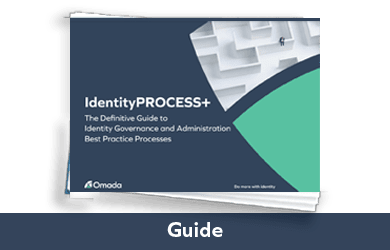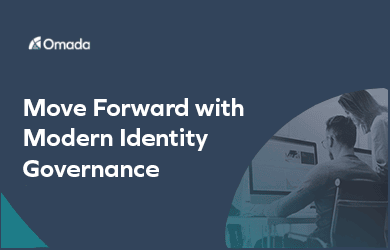The State of Identity Governance 2024, Omada’s comprehensive report of 567 enterprises with 1,000+ employees, reveals that 93% of IT professionals and business leaders overall agree their organization uses strong identity verification, 92% say they can quickly identify anomalous behavior and shut down suspect accounts, 91% say they can easily meet new business requirements, and 89% say they can easily produce regulation-specific reports.
Given organizations are confident about their security hygiene, why is security leadership so concerned about identity-related threats?
The report data also shows that this confidence does not carry over to what IT professionals think about identity-related threats. The data shows over 95% of senior IT and security leaders report grave concerns about identity-related threats. If over 90% of respondents believe they have sufficient security hygiene, why are so many IT professionals expressing such elevated levels of concern about identity-related cybersecurity threats? Since all organizations are unique, there is no single answer.
To find the underlying cause of this disconnect, IT teams need to ask some tough questions. Start with these three:
- Are hackers really breaking in or are they logging in? If an attacker is logging in using compromised credentials, many of the security hygiene and prevention tactics organizations use to stop them are neutralized. To really create a system to thwart identity-related attacks, organizations need to make protecting identities a core competency in their cybersecurity strategy. Modern IGA practices and technology are designed to meet a dynamic threat landscape that grows more sophisticated every day by providing the level of visibility and control to shut down compromised identities.
- Are you following the principle of least privilege? The report data shows that in most organizations, this is not the case. Giving users access to systems and applications to which they do not need access and/or having overly permissive accounts causes unnecessary risks of identity-related security breaches. To stop over-permissioned accounts and unnecessary access, organizations must adopt a modern IGA and implement it using a proven, defined process. This is critical to managing identity lifecycles, access requests and provisioning, changing roles and policies, and real-time security breach response. It is also an important first step to implementing a mature zero-trust security model.
- Are you using a best-of-breed modern IGA solution that integrates with your Identity and Access Management (IAM) tools? The report data clearly shows that organizations prefer best-of-breed solutions to enhance both efficiency and security. The alternatives are not suitable to meet the requirements of identity security today. Legacy IGA often requires costly, complex customization and ongoing support to take on new demands of the organization. Single vendors offering multiple IAM solutions may offer a decent option in one area but less-than-ideal options in others. Because these vendors offer many solutions under one product, they tend to lack the ability to connect with other IAM solutions, forcing users to work with inferior technology in many cases. In addition, they are not able to connect to supporting technology like generative AI and machine learning, making it more difficult to use the patterns and information generated by all IAM solutions to optimize real-time identity and access management.
Gain more confidence in your organization’s capacity to stop identity-related cybersecurity threats
There is no silver bullet for stopping identity-related cyberattacks. Good security hygiene is an essential first step and one that, according to the data, IT professionals and business leaders feel particularly good about. It is, however, clearly not enough. To close the confidence gap, it is critical to make an honest assessment of your access control posture, incidences of unnecessary user access to systems and applications and over-permissioning, and the ability of your current IGA system to manage current and emerging identity-related threats. Once you create benchmarks to know where you are, you can prioritize the functionalities you must have in your IGA solution and your IAM strategy to manage cybersecurity risks effectively.
How The State of Identity Governance 2024 can help
The State of Identity Governance 2024 offers a jumping-off point for benchmarking the effectiveness of your organization’s IGA strategy relative to others. You can identify where your organization needs the most attention and use the data to prioritize the functionality your organization must have in its IGA system to meet current and emerging identity-related threats. You can also use industry data to show colleagues where the greatest needs are and how to modernize your IGA to meet them.

























